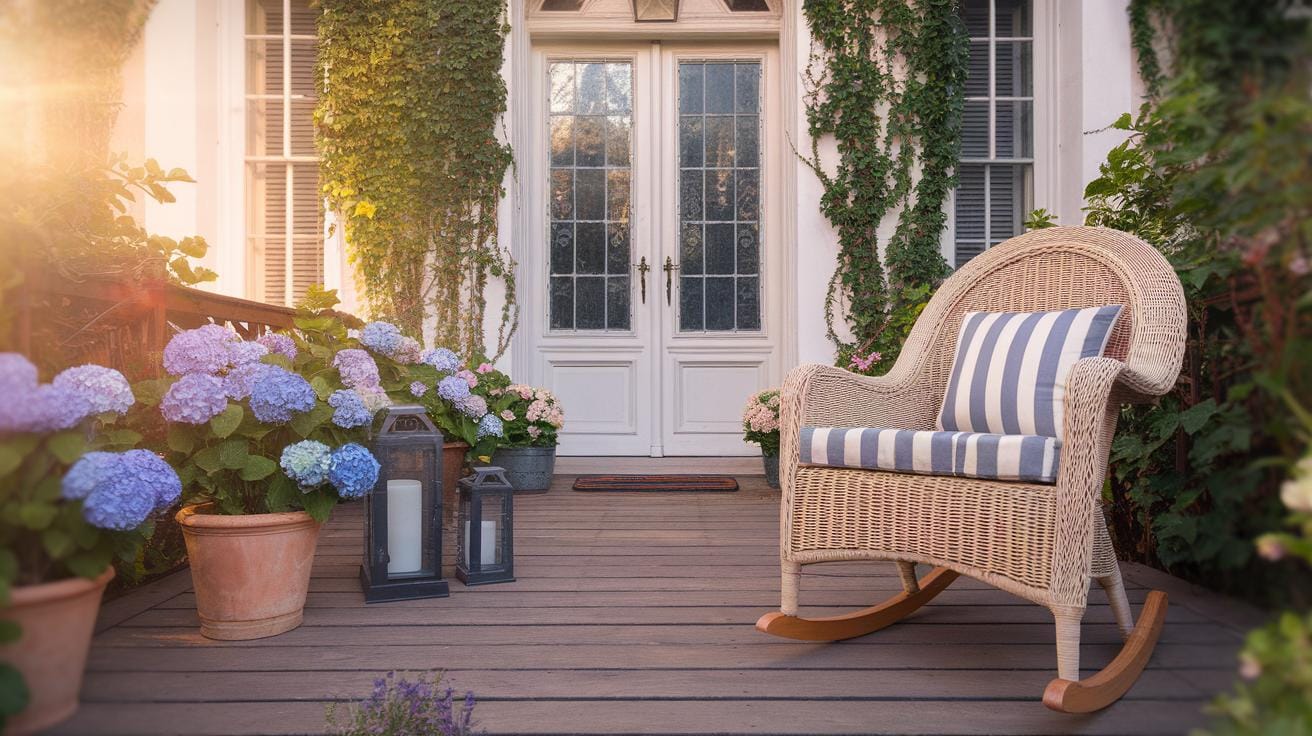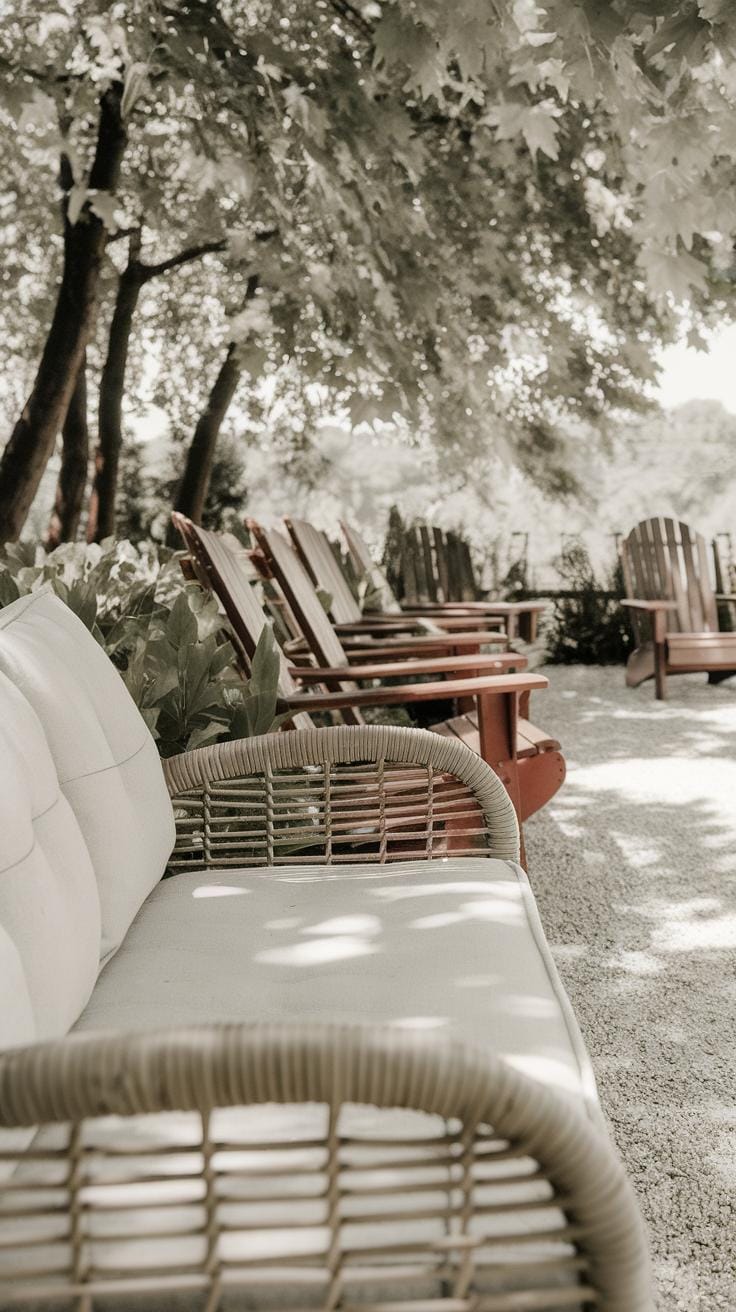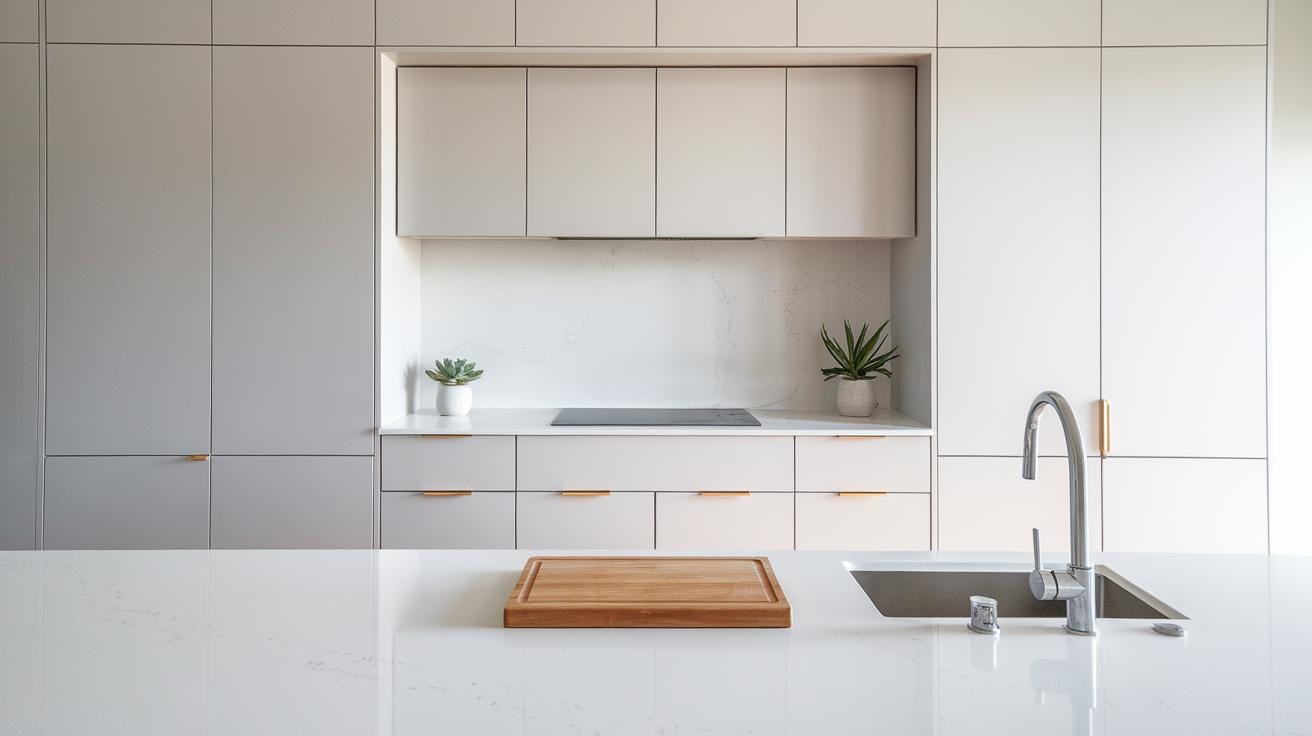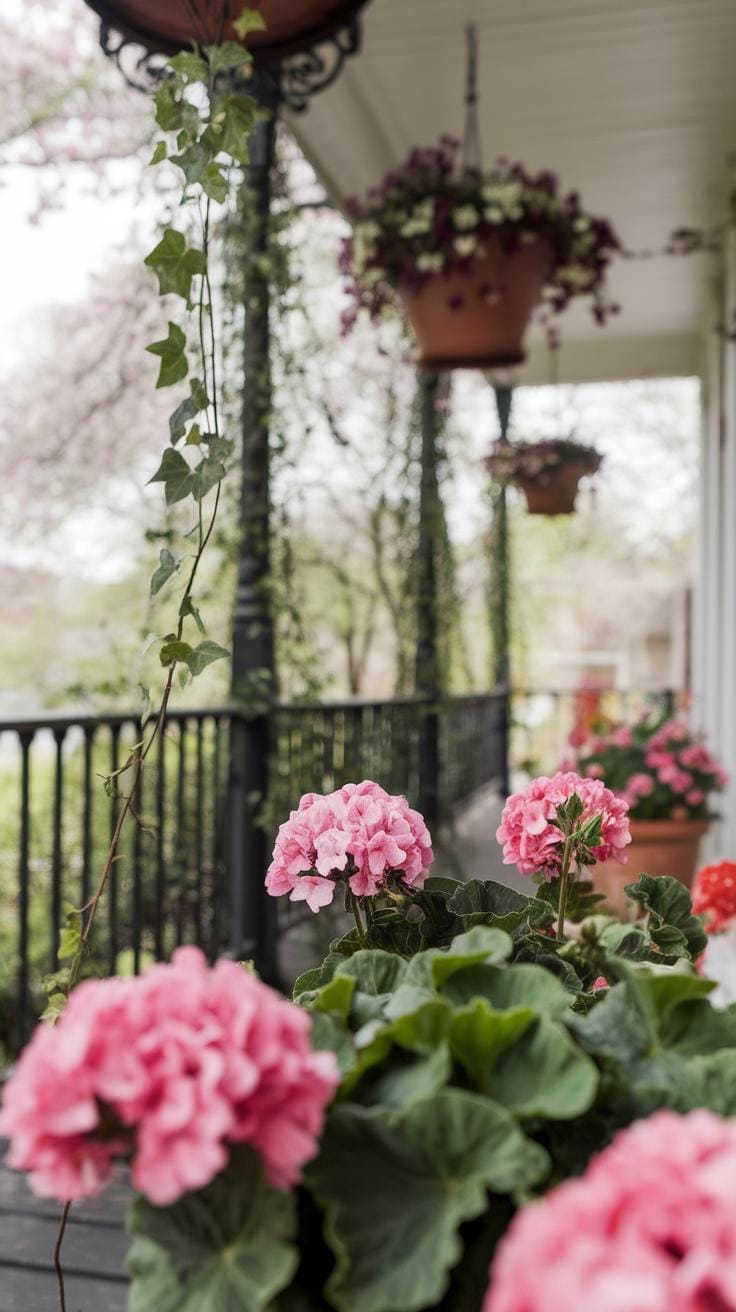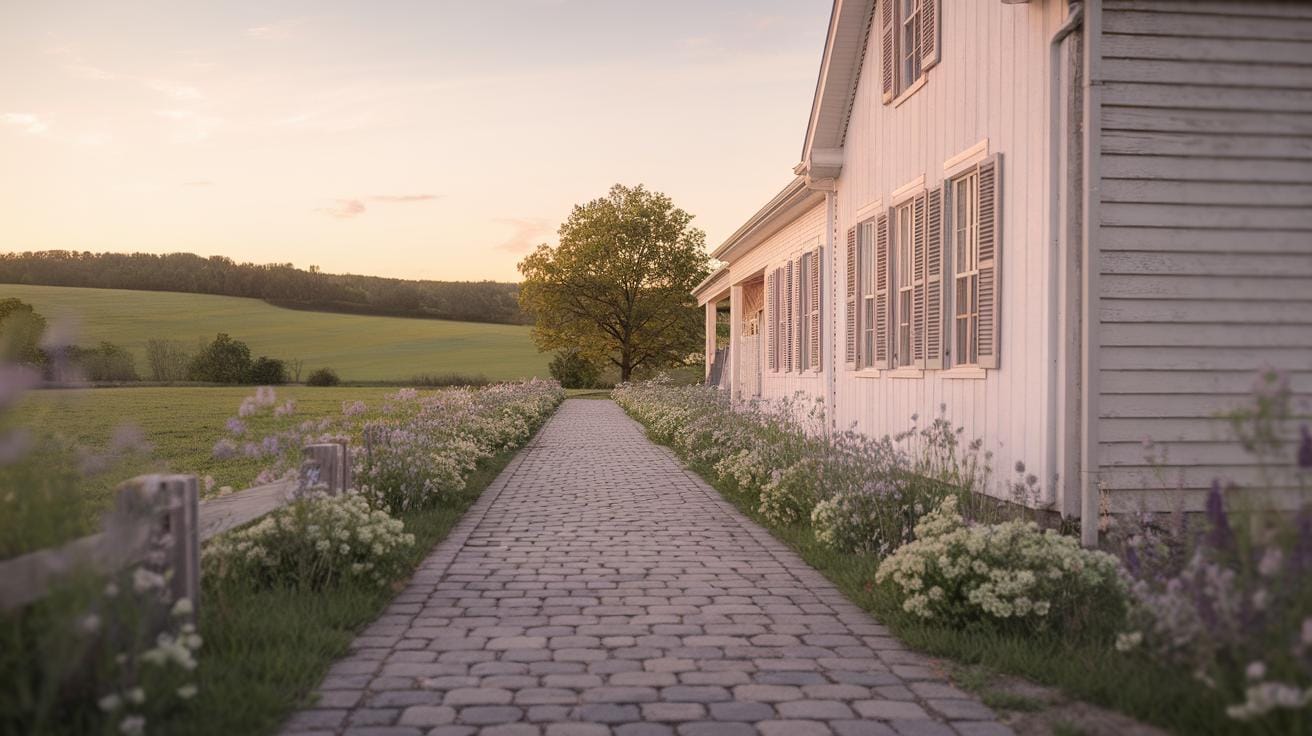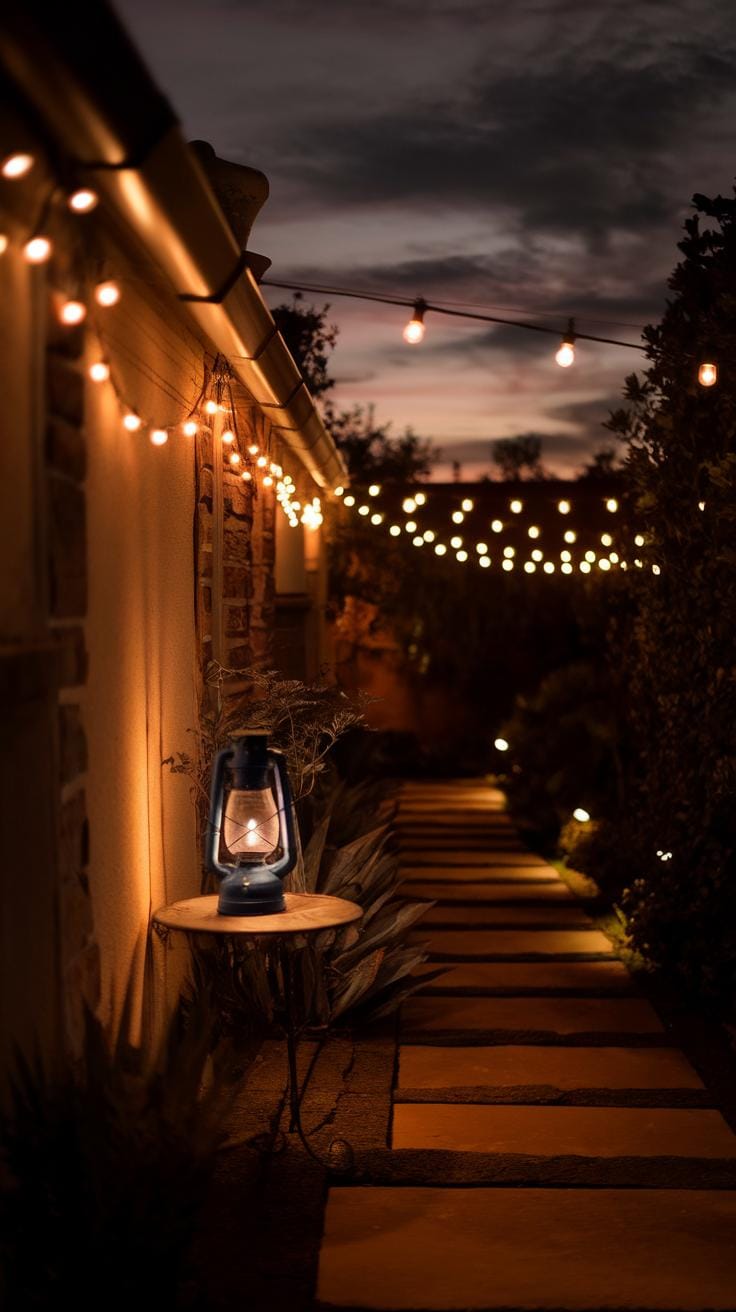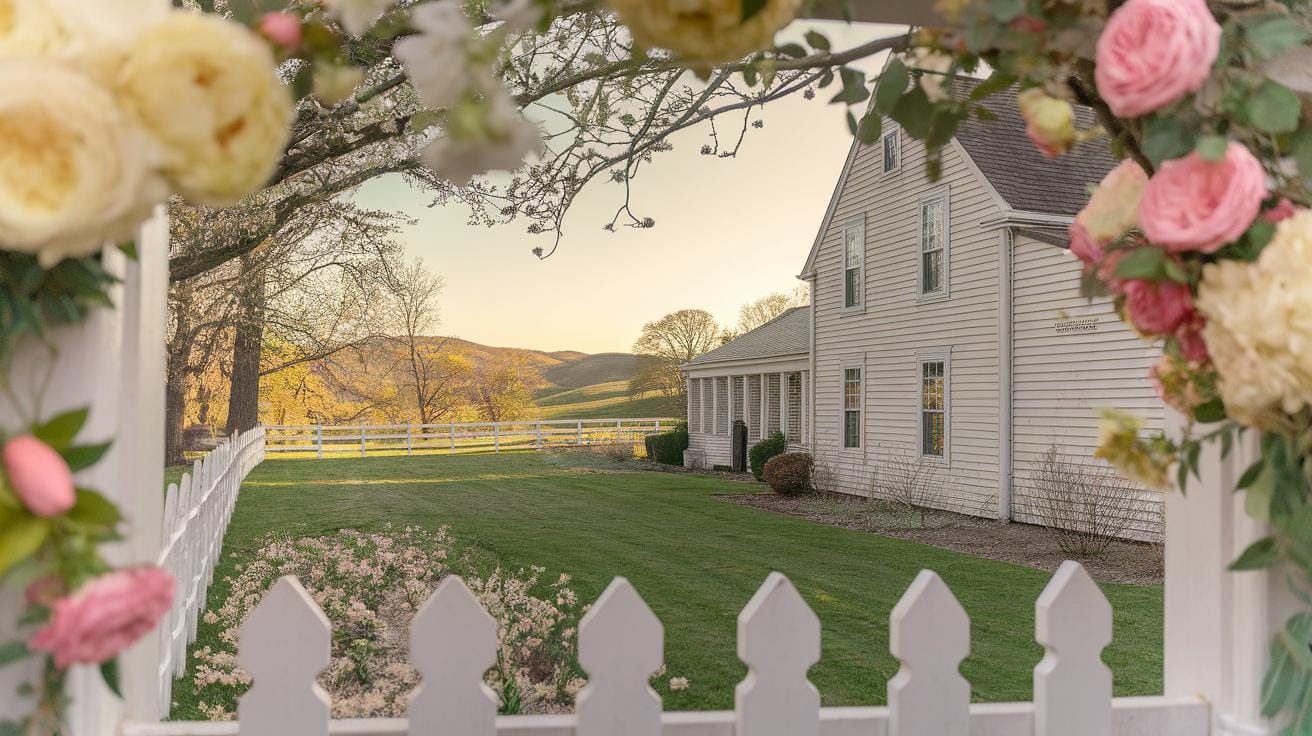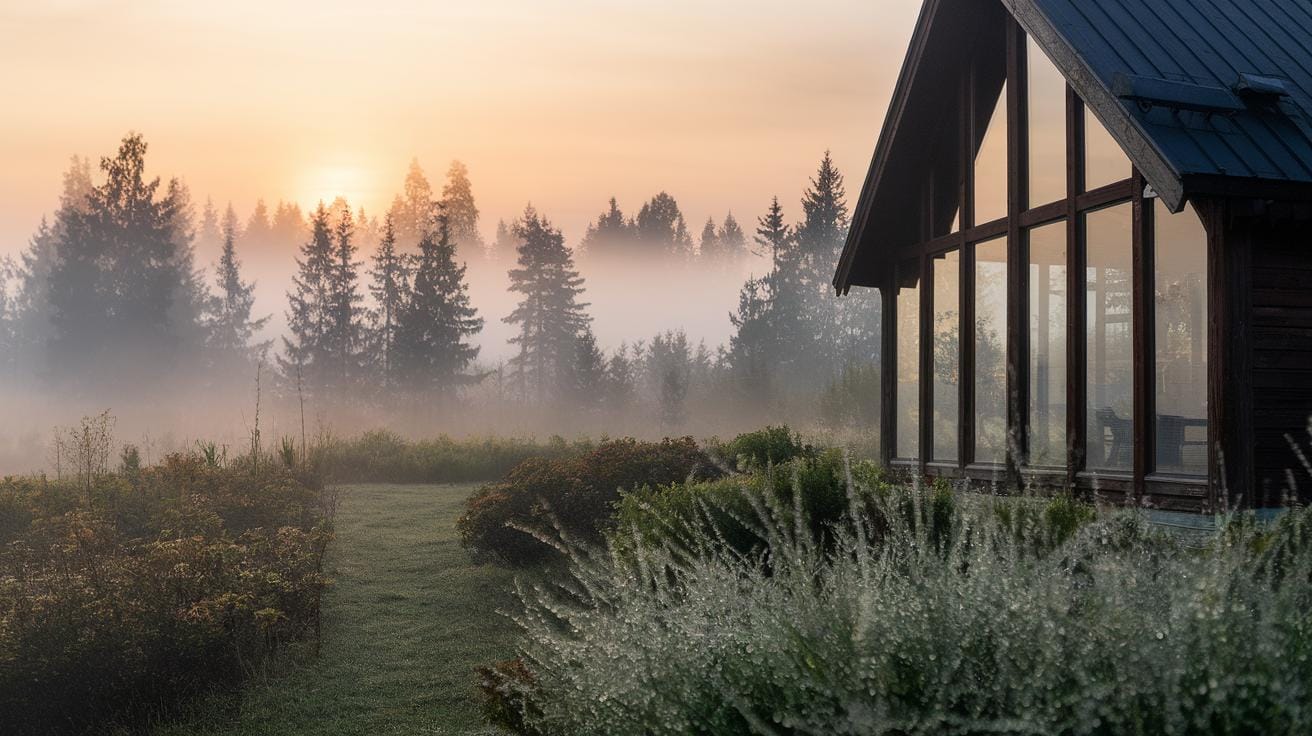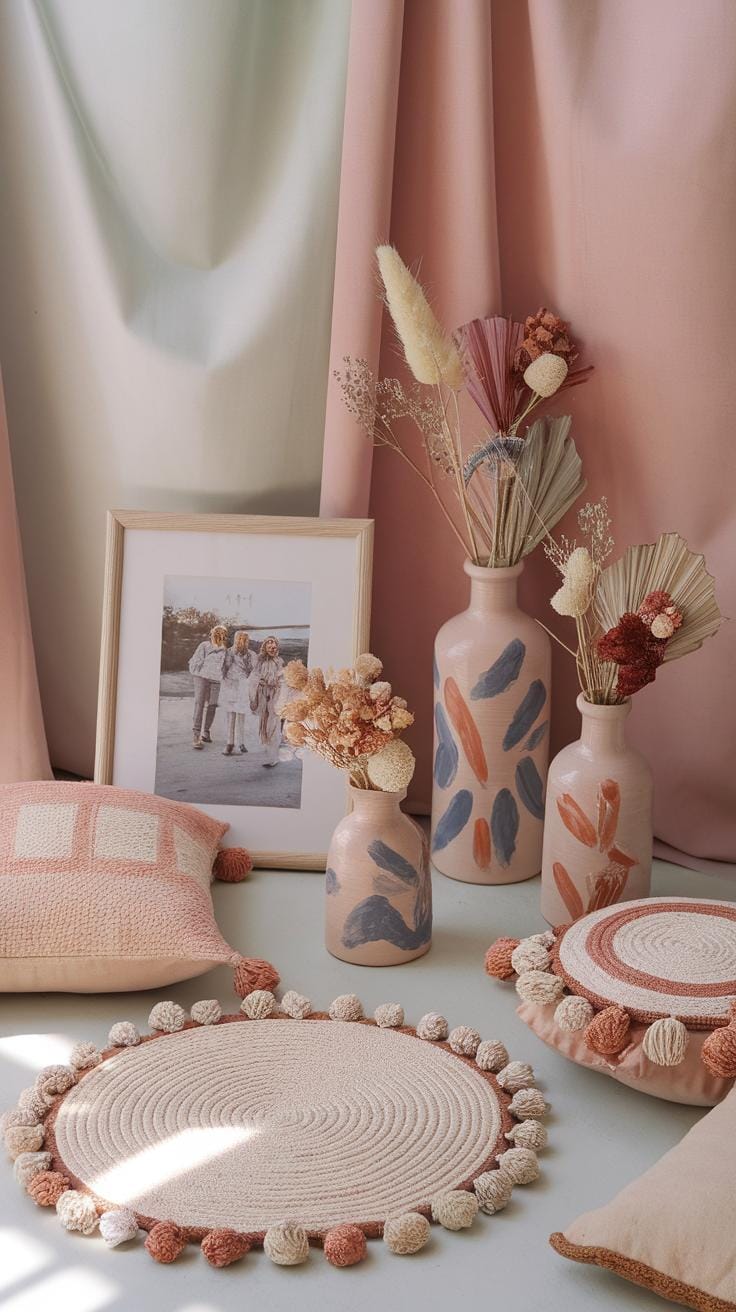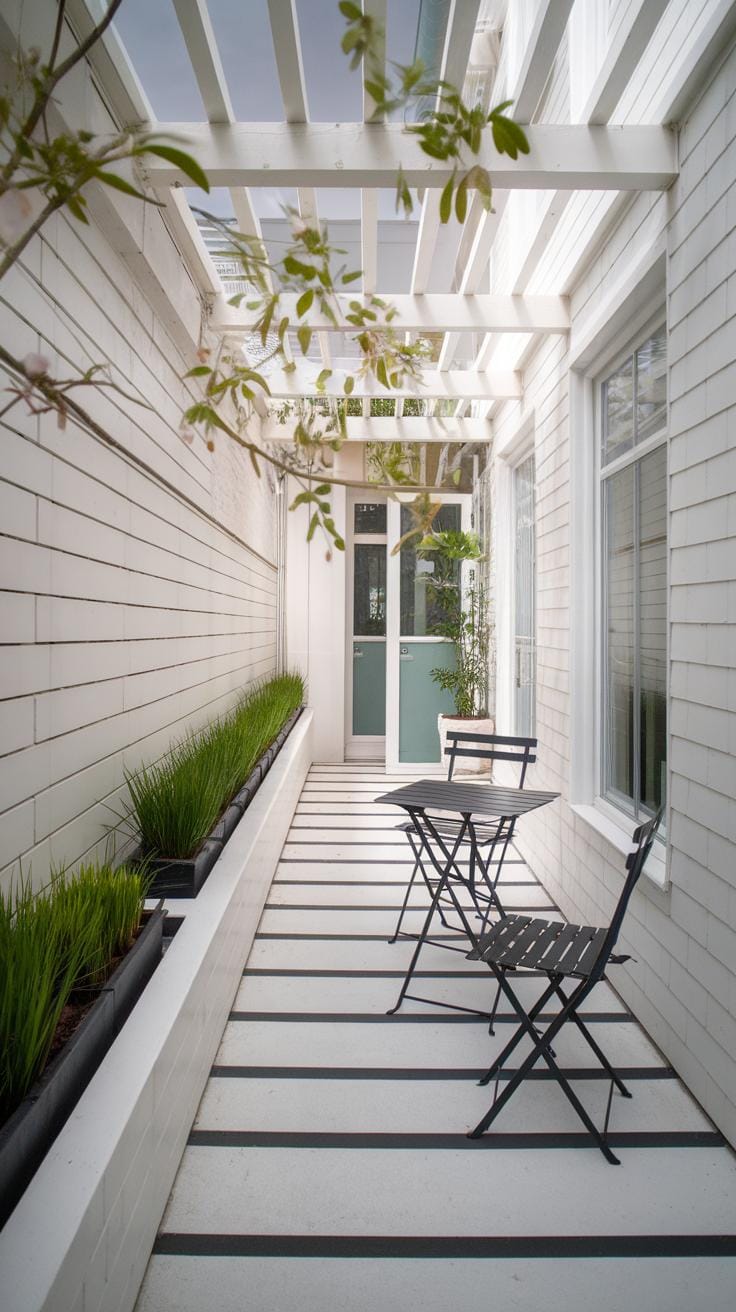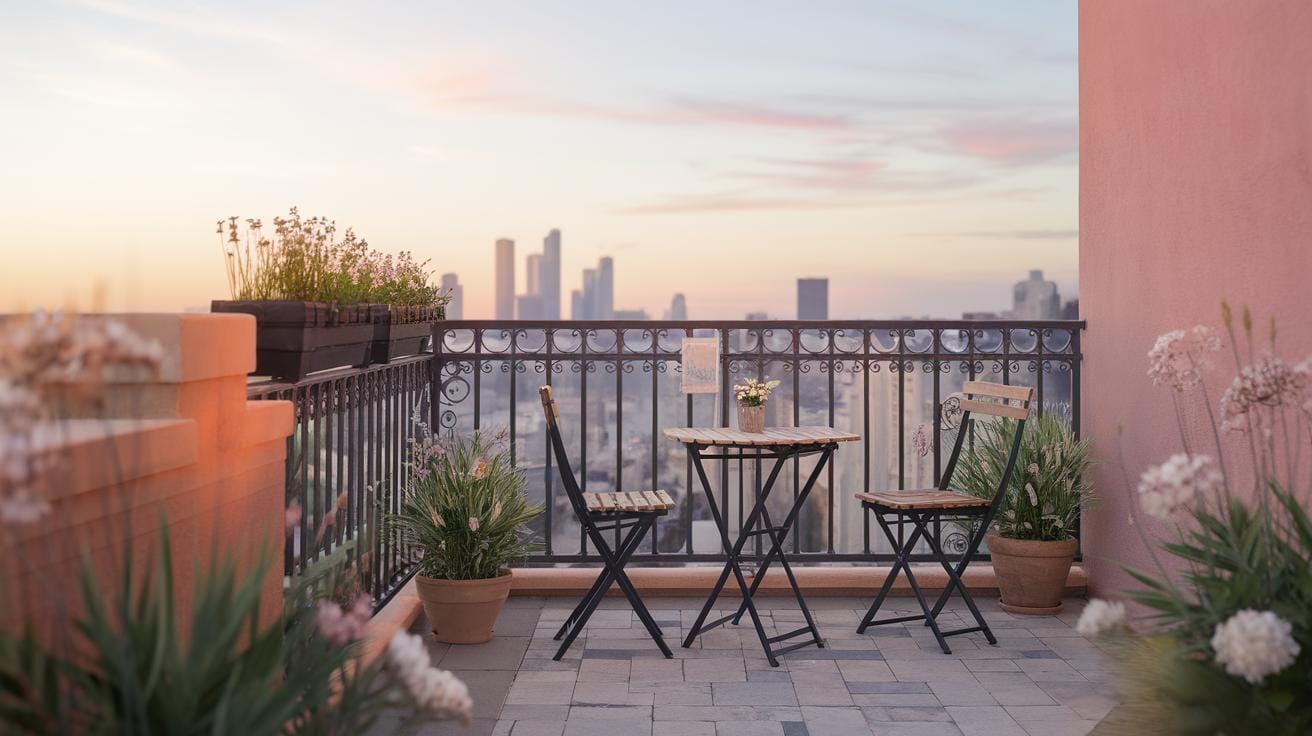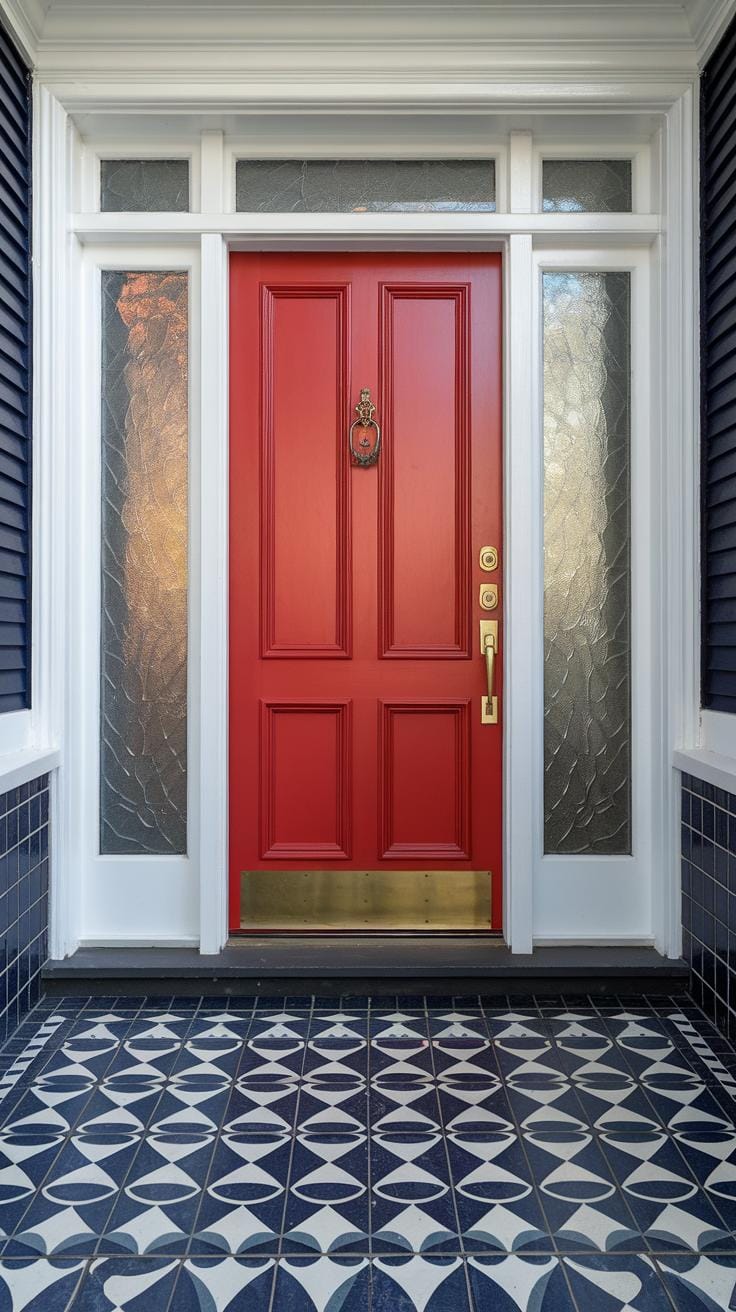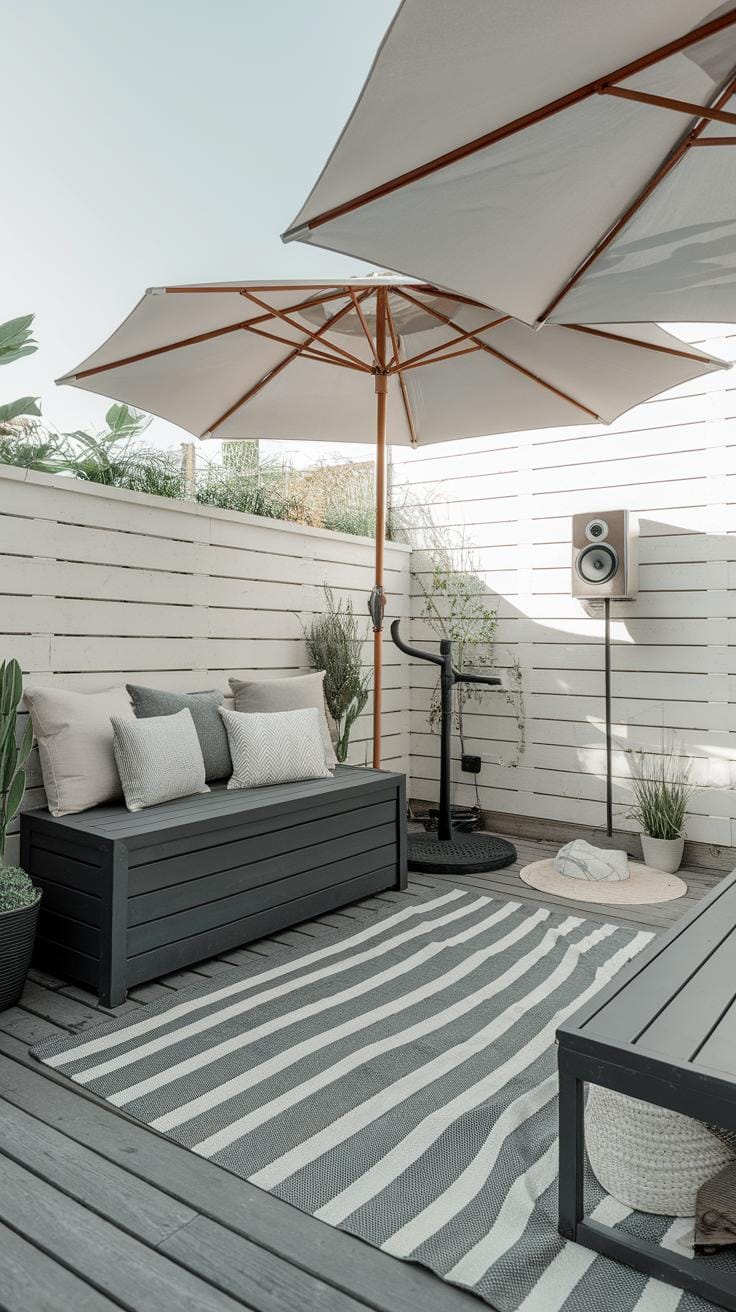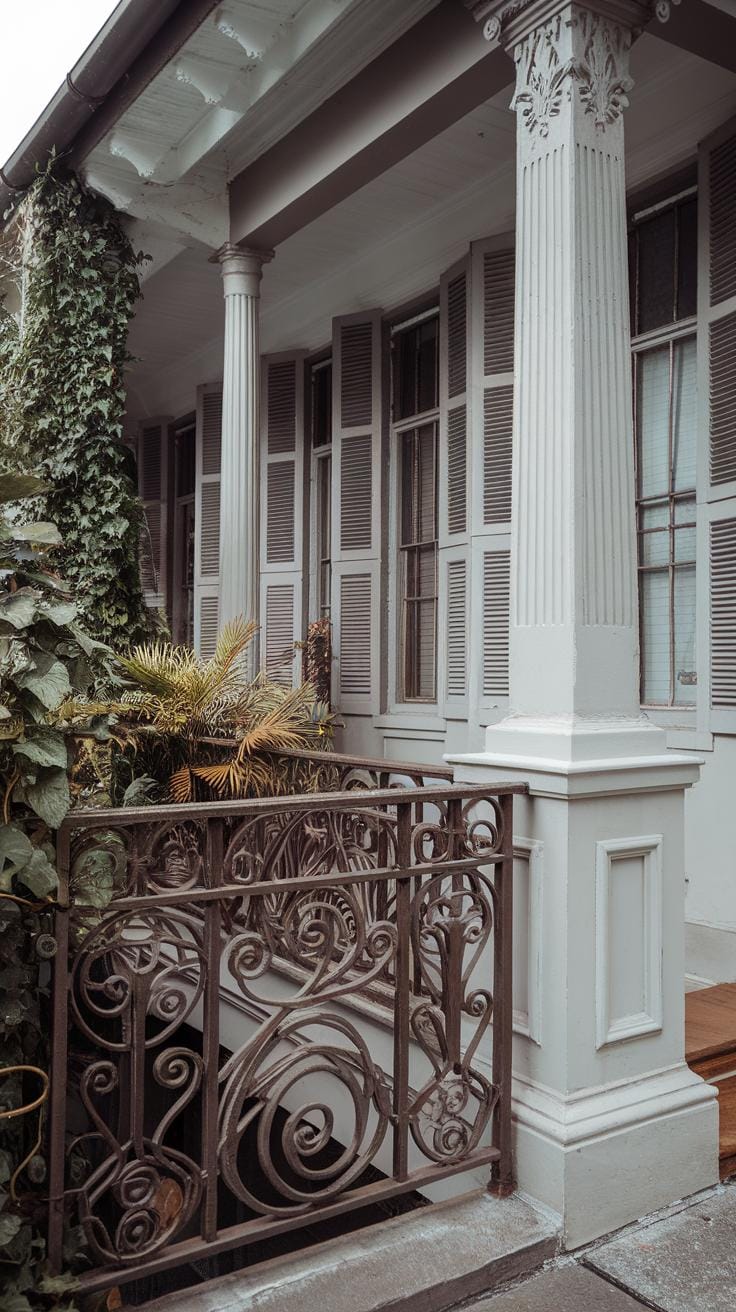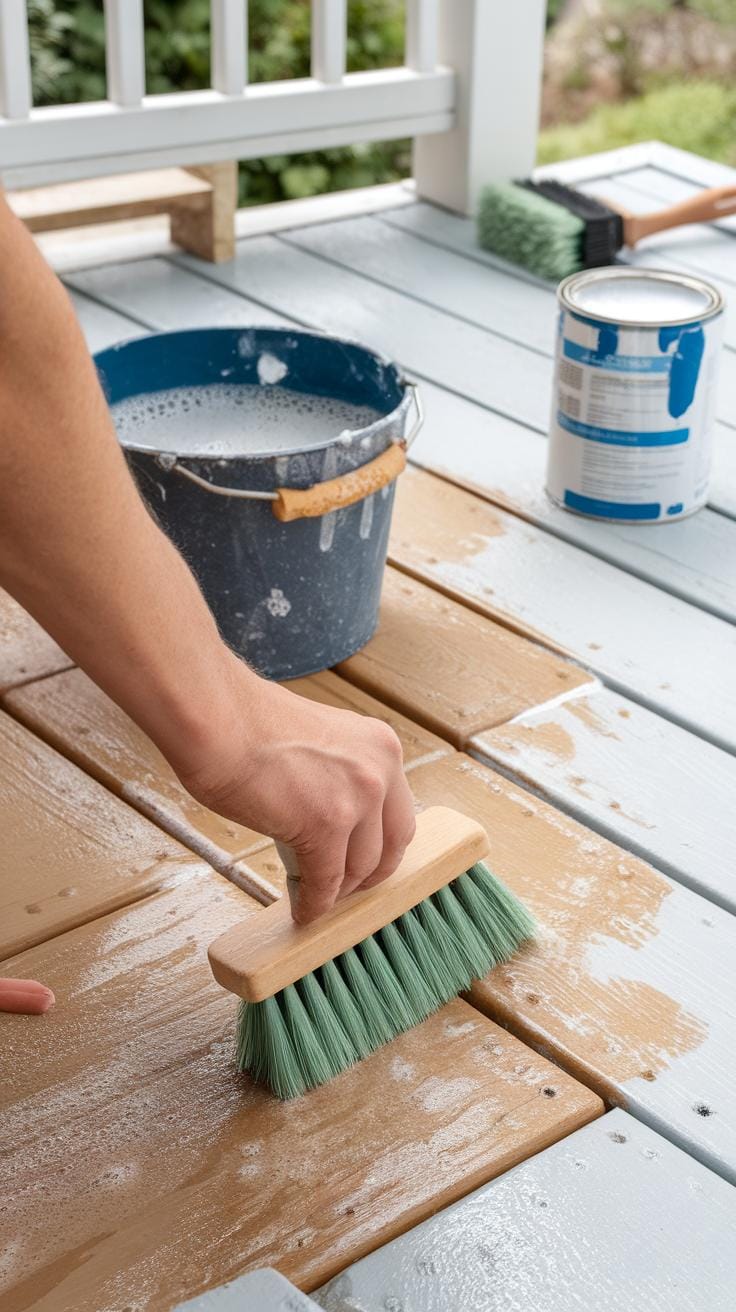Introduction
Your front porch is the first part of your home that guests see. It sets the tone for what visitors can expect from the rest of your house. Creating a welcoming front porch can improve your home’s curb appeal and provide a comfortable space for relaxing or meeting neighbors. There are many ways to design and decorate a front porch that reflect your style and invite guests to feel at home. This article will explore practical ideas and creative solutions to help you make your front porch inviting and friendly.
From seating choices to lighting and greenery, small changes can make a big difference. You do not need a large porch or a big budget to create an attractive space. Practical tips and fresh ideas can help you use the space effectively. You will learn about decorative styles, functional furniture, and how to use color and accessories to add charm. Think about your daily lifestyle and how your porch can suit your needs and impress visitors.
Choosing the right seating for your front porch
Picking front porch seating means balancing comfort with durability. Benches, rocking chairs, swings, and modern outdoor furniture each offer unique benefits. Benches provide flexible seating and can fit small spaces. Rocking chairs add gentle movement that relaxes your guests. Swings give a playful touch and invite shared moments across the porch. Modern outdoor sofas and chairs offer cushioned comfort and style but may need more care.
Materials affect how well your seating stands up to weather. Wood brings natural warmth but needs sealing against moisture. Metal resists insect damage and often lasts long but can get hot in sunlight. Wicker looks cozy and light but must be weatherproof or stored inside when wet. Plastic furniture stays lightweight and easy to clean but can fade over time.
Arrange seating to make interaction easy. Face chairs toward one another or group benches with side tables. Leaving enough space ensures guests move freely and feel relaxed. Ask yourself how you want visitors to use the space. Should the porch be a quiet spot or a lively meeting place? Your seating plan can shape the mood.
Benefits of different seating styles
Benches seat several guests at once and save space. They work well if you want flexible seating but lack back or arm support unless cushions are added. Rocking chairs provide comfort and soothe aches with motion but usually seat one person at a time and require more porch space.
Swings make the porch feel inviting and fun, perfect for pairs or families. They encourage relaxed, face-to-face chats but need sturdy hanging points. Outdoor sofas deliver luxury with padded cushions and style. They suit larger porches but demand more upkeep and space. Each style fits certain needs—choose what matches how you use your porch.
Material choices and maintenance
Wood furniture brings classic appeal but requires regular sealing or painting to prevent rot. Teak and cedar resist moisture better than pine. Metal sets like aluminum and wrought iron look strong and last long but can rust or get hot unless treated properly. Wicker looks natural but synthetic resin wicker stands up to weather better than natural wicker.
Plastic or resin furniture stays light, easy to clean, and won’t rust. Though less durable than metal or teak, it can last years if protected from sun damage. Clean wood with mild soap, metal with a rust remover, and wicker with a soft brush. Cover or store furniture in harsh weather to extend life. Consider how much time you want to spend on maintenance before making your choice.
Incorporating greenery and flowers
Your front porch can feel more lively and fresh by adding plants and flowers. Consider using hanging baskets filled with trailing plants like ivy or petunias to save space and create layers of green at eye level. Potted plants allow you to group different shapes and colors together and easily change arrangements based on the season.
Flower boxes attached to railings bring color closer to your guests as they arrive and can hold a variety of blooms or small herbs. Choose low-maintenance plants if you want to spend less time watering and pruning. Succulents, ferns, and hardy herbs like rosemary work well for this purpose.
Think about rotating seasonal decorations, such as pumpkins and mums in fall or bright annuals in spring, to keep your porch feeling fresh throughout the year. How might adding greenery change the way guests experience your home before stepping inside?
Choosing suitable plants for porches
Different porches have varied light conditions. For shaded porches, plants like ferns, hostas, and begonias do well without direct sun. These plants stay healthy with moderate watering and suit cooler, dimmer spots.
If your porch faces the sun most of the day, sun-loving plants like geraniums, marigolds, and lavender thrive with plenty of light. Drought-tolerant plants such as succulents or ornamental grasses need less frequent watering and handle heat well.
Assess your porch’s light before selecting plants. How much sun hits it during the day? This will help you choose specimens that grow strong and maintain a welcoming appearance for your visitors.
Decorative uses of plants
Create interest on your porch by combining plants in vertical gardens using trellises or wall-mounted pots. This saves floor space and adds depth. Multi-level arrangements with plant stands or tiered shelves break monotony and elevate smaller plants for better visibility.
Select decorative pots that match your porch’s style. Colorful ceramic containers or rustic wooden boxes become part of the decor themselves. Mixing pot styles also adds visual texture and invites closer inspection.
Could arranging your plants in unique patterns make guests pause and appreciate your porch even more? Try grouping pots by size or color to create a pleasant flow along your entry path.
Using lighting to enhance ambiance and safety
Lighting plays a key role in making your front porch both welcoming and secure. Using the right fixtures can create warmth while helping you and your guests see clearly at night. Consider string lights for soft, gentle illumination around railings or overhead. Lanterns add charm and can be placed on steps or side tables to brighten darker spots. Wall sconces next to your door offer focused light and add style. Solar lights provide energy-saving options that turn on automatically after dusk.
Place lights where guests need them most: along pathways, near door handles, and around seating areas. Mix different types for a layered effect that feels inviting yet practical. Imagine arriving home and stepping safely on a well-lit porch that invites conversation rather than casting shadows that hide obstacles. What lighting setup would make your porch feel safest and most comfortable?
Types of porch lighting
Ambient lighting provides general brightness for your porch and sets a welcoming tone. Examples include string lights or ceiling fixtures, which softly light the entire area. Task lighting helps with specific activities, like opening the door or reading a menu. A good example is a mounted sconce next to the door or a lamp near a chair. Accent lighting highlights details, such as a plant, artwork, or architectural feature. Small spotlights or lanterns work well for this purpose.
Balancing these three types creates a functional and pleasant space. For example, use ambient lights to brighten the porch, task lighting at entrances, and accent lights to showcase your favorite porch decorations. What task on your porch could you light better?
Safety considerations with porch lighting
Good lighting reduces trips, falls, and other accidents on your porch by illuminating steps, uneven surfaces, and obstacles. Well-lit areas give you a clear line of sight, so guests won’t struggle to find doormats or locks. Bright entrances discourage unwanted visitors, increasing your home’s security. Motion-activated lights work well because they light up only when needed, saving energy and surprising visitors.
Check for dark spots around your porch and add lights there. Make sure bulbs are bright enough without being harsh. How can you improve safety on your porch with smarter lighting choices? Taking simple steps now makes your porch a safer and more inviting place for everyone.
Adding personal touches with decor and accessories
Your front porch reflects who you are. Using rugs with patterns you like can set the tone right from the doorstep. Choose pillows with designs or colors that match your style. Artwork, such as framed prints or sculptures made for outdoor use, adds a unique flair. Seasonal decorations let you change the feel throughout the year. Mixing bold colors with neutral ones balances the look and keeps the space welcoming without overwhelming it.
When selecting decor, think about how each piece fits your daily life and personality. Do you prefer classic, modern, or rustic styles? How much maintenance are you willing to do? Layering textures like woven rugs and soft cushions helps create comfort and interest. The goal is to craft a porch that invites guests and shows off your taste while staying practical for outdoor conditions.
Selecting weather-friendly accessories
Outdoor decor needs to stand up to sun, rain, and wind. Materials like polypropylene, synthetic wicker, and treated wood resist damage better than natural fibers. Look for cushions with quick-dry foam and covers made of solution-dyed acrylic or polyester fabrics. These fabrics fade slower and resist mildew.
Metal finishes work well if they have rust-resistant coatings. Consider powder-coated steel or aluminum. Choose rugs labeled as outdoor or all-weather for durability and easy cleaning. Think about storage options to protect delicate items during harsh weather.
Incorporating seasonal themes
Changing your porch decor with the seasons creates freshness and excitement for guests. In spring, bring in floral patterns, pastel pillows, and light wreaths. Summer invites bright colors, lanterns, and patriotic flags. Fall calls for warm tones, pumpkins, and cozy textiles. Winter works well with evergreens, twinkling lights, and holiday-themed pillows.
Swap a few key pieces instead of overhauling everything. This keeps decorating manageable and affordable. Ask yourself which colors or symbols connect with your favorite holidays or seasons. Personalizing these small touches keeps your porch lively all year and warmly welcomes neighbors and visitors.
Maximizing space on small porches
Small porches can still feel full and inviting with smart choices. Select pieces that fit rather than crowd the space. Think compact furniture designed for tight areas. For example, a small bench with built-in storage uses space efficiently without extra clutter. Folding chairs and tables offer flexibility. You can easily stow them when guests leave or when you want open space.
Vertical storage makes room for decor and essentials without taking floor space. Wall-mounted shelves or hooks hold plants, lanterns, or small baskets. This creates a lively, layered look without overcrowding.
Creating visual interest on a narrow porch asks for balance. Use a few statement items, like a colorful chair paired with a small rug, instead of filling every corner. Which areas get your focus? Plan where your eye naturally lands and place standout pieces there. This keeps your porch inviting without feeling cramped.
Space-saving furniture solutions
Lightweight furniture makes moving and arranging easier. Look for chairs crafted from aluminum or plastic that you can lift with one hand. Folding furniture is perfect for small porches. When not in use, tuck away folding tables and chairs to open up the area.
Multi-purpose furniture adds value. For instance, an ottoman that doubles as storage lets you hide cushions or garden tools. A narrow console table can serve as both a plant stand and a place to set drinks.
Think about how each piece works for you. Do you need seating, storage, or both? Choosing dual-function items helps keep your porch organized and ready to welcome guests comfortably.
Design tricks to make small porches feel larger
Color choice impacts how spacious your porch feels. Light, neutral shades reflect more sunlight and open the area visually. Soft pastels or whites can make the porch appear wider and brighter. Avoid dark colors that absorb light and shrink the room.
Mirrors are powerful tools. Placing a mirror across from the entry or near a light source doubles the sense of depth. Find ones with weatherproof frames to ensure they last outdoors.
Arrange furniture to keep walkways clear. Angling seating toward the door or stacking chairs vertically when not in use also avoids tight corners. Can your porch layout flow naturally with movement? Prioritizing open paths helps your porch feel less like a confined space and more like an inviting entry point.
Creating a welcoming entrance with door and flooring choices
Your front door sets the tone for your porch and home. Choosing the right color and style can draw eyes and make guests feel invited before they even step inside. Consider a classic paneled door for a timeless appeal or a modern glass insert to bring in light. Paint colors like deep navy, cheerful red, or muted green offer personality while complementing your house’s exterior. Contrast bright door colors against neutral siding for a bold look that welcomes visitors.
The flooring beneath your feet also influences your porch’s look and feel. Wood planks give warmth but require upkeep. Stone and tile show strength and add texture but differ widely in maintenance and climate suitability. Think about your local weather and how much you want to care for the floor. Flooring ties the entire porch together, communicating style and function the moment guests arrive.
Choosing colors and styles for your front door
Picking a front door color depends on your home’s style and the atmosphere you want to create. Darker shades like charcoal or forest green can hint at elegance and stability. Bright hues such as sunflower yellow or coral spark energy and friendliness. A fresh coat of paint can redefine a plain door, catching attention without overwhelming the eyes.
Door designs vary from modern minimalism to rustic craftsman. A door with window panels can make your porch feel light and open. Solid wood doors suggest privacy and security. Ask yourself: do you want the door to stand out or blend in? Matching door style to your home’s architecture helps achieve a cohesive, inviting entrance.
Flooring options for durability and style
Wood floors provide natural charm but need sealing and protection against moisture and insects. Cedar and redwood resist decay better than pine, lasting longer with care. Stone flooring like slate or limestone offers durability and a textured look that’s easy to clean. These materials withstand heavy foot traffic and weather changes well.
Tile adds color and pattern variety but can crack in freezing climates. Porcelain tiles resist moisture and stains, making them ideal for covered porches. Composite decking mimics wood, requiring minimal upkeep and resisting fading and rot. Think about your climate and how much time you want to spend on maintenance to guide your flooring choice. Which material will best suit your porch’s exposure and your lifestyle?
Adding functional elements for comfort and utility
Your front porch becomes far more inviting when you add features that boost comfort and usefulness. A ceiling fan can cool the space during hot days, letting you enjoy the outdoors without feeling uncomfortable. Fans with adjusted speeds provide a gentle breeze that refreshes guests without being too strong.
Consider installing overhead covers, like a pergola or retractable awning. These protect you and your visitors from sun and rain, making the porch usable in a variety of weather. With a covered area, you can sit outside longer, even on windy or wet days.
Side tables offer a place to set down drinks or books, making the porch more functional for conversation and relaxation. Storage benches combine seating with hidden space to store cushions, blankets, or gardening supplies. This keeps the area tidy and ready for guests at any moment.
How do these elements fit your daily use? Think about the climate in your area and how often you want to spend time outside. Adding practical features means your porch will serve more than just a quick stop—it becomes a destination.
Comfort enhancements
Fans, shades, and cushions transform your porch into a cozy spot all year. Fans help in the summer by circulating air and reducing heat. Shades or curtains block the sun’s rays or light wind, creating a comfortable retreat during bright or breezy days.
Choosing cushions with weather-resistant fabric means you won’t worry about spring showers or morning dew. Plush seating invites guests to relax longer. Changing cushion covers with the seasons can refresh the look without a full redesign.
How comfortable does your front porch feel during the hottest or coolest days? Adding these comfort items encourages everyone to linger and enjoy your space more often. These improvements invite you to use your porch beyond short visits.
Storage and utility solutions
Keeping your porch clean and organized improves its welcome. Storage benches provide hidden spots for pillows, outdoor games, or plant care tools. You can sit on them, yet they also conceal clutter, preventing a messy appearance.
Multi-purpose furniture, like tables with shelves or stackable stools, offers flexible use without crowding your porch. Hooks on walls or railings can hold hats, bags, or lanterns, saving floor space and keeping items accessible.
Think about what items you often bring outside. Could a storage solution make setting up or cleaning easier? Creating an organized porch helps you and your guests feel more comfortable and relaxed. A tidy entrance shows care and attention to detail.
Integrating architectural styles
Your front porch should reflect the style of your home for a seamless look. Matching design elements helps the porch feel like a natural extension rather than an afterthought. Popular porch styles offer distinct clues on how to integrate architectural features properly.
Victorian porches often include intricate woodwork, turned spindles, and delicate trim. A home with this style pairs well with slim, decorative columns and railings with detailed patterns. Craftsman porches favor sturdy, square columns, often tapered, sitting on stone or brick bases. They usually feature wide overhangs and exposed rafters that emphasize solid craftsmanship. Modern porches focus on clean lines and minimal decoration. Metal or simple wooden columns without excessive details match best here.
Choosing railings and trim to suit your architecture supports harmony. For example, Colonial-style homes use classic, symmetrical railings and evenly spaced balusters. Consider the scale and proportion of your columns and railings; oversized features can overwhelm a smaller house, while tiny details might seem lost on a large home. Thoughtful choices keep your porch welcoming and consistent.
Popular porch styles and features
Recognizing the main features of different porch styles helps you decide what fits your home. Victorian porches often have ornate trim, curved brackets, and vibrant paint colors. Their designs celebrate decoration and complexity. Colonial porches stick to symmetry, featuring columns and railings with simple, straight lines, often painted white or soft tones.
Craftsman porches emphasize handcrafted details. You’ll see thick columns, natural wood tones, and exposed beams. These porches blend well into landscapes with their earth-focused colors and materials. Contemporary porches highlight simplicity. Large glass panels, metal railings, and smooth surfaces dominate. They make the porch appear airy and open.
Choosing details to match style
Selecting furniture, lighting, and decor to fit your porch’s architectural style completes the look. For Victorian porches, delicate wrought iron chairs, lantern-style sconces, and floral cushions enhance the ornate theme. On Craftsman porches, choose wooden rocking chairs, simple pendant lights, and earthy-colored rugs. These elements add warmth while maintaining the solid look.
Modern porches pair well with sleek metal furniture or minimalist wooden sets. LED strip lighting and geometric planters fit this style. Colonial porches work best with classic wooden rocking chairs or benches. Simple lanterns or wall-mounted lights in black or brass add timeless charm.
Does your porch’s furniture feel out of place? Matching these details brings coherence and invites guests to feel welcomed right from the doorstep. What small change can you make today to better blend your porch with your home’s character?
Maintaining your front porch for lasting appeal
Your front porch shows guests the care you put into your home. Keeping it clean and safe requires regular attention. Dirt and debris can cause damage over time if left unchecked. Create a cleaning schedule that fits your lifestyle. Sweep or hose down your porch every few days to remove dirt and leaves. Wipe down railings, furniture, and light fixtures weekly to avoid grime buildup.
Wooden surfaces need extra care. Plan to wash your porch thoroughly once each season. Apply a fresh coat of paint or sealant every couple of years to protect against weather damage. Check outdoor lights and furniture for wear or loose parts each month to stay on top of repairs. Taking these steps preserves your porch’s charm and protects your investment.
Routine cleaning and inspection
Daily tasks can include shaking out welcome mats and sweeping off dirt. Weekly, remove cobwebs from corners and clean glass on light fixtures. Seasonal work should cover washing the porch floor and railings. Look for peeling paint, rust spots, or cracked wood while you clean.
Regular inspection saves effort later. Ask yourself: Are there dark spots where water pools? Is the porch surface slippery after rain? Checking for these signs prevents damage. A clean porch invites guests and makes your home feel cared for.
Preventive care and repairs
Spotting damage early is key. Check for loose rails, cracked wood, or corroded nails. Tighten screws and hammer down nails before they become hazards. Repair small wood splits with filler and sand smooth. Replace broken or dim light bulbs to keep the area safe and welcoming.
Look for signs of rot or insect damage around wooden supports. Addressing these quickly avoids costly repairs later. Ask yourself: Could this spot weaken over time? Act promptly to maintain structure and comfort. Small fixes now keep your porch inviting for years to come.
Conclusions
Creating a welcoming front porch is about thoughtful choices and attention to detail. Adding comfortable seating and using lighting strategically can change the feel of your porch from dull to inviting. Plants and flowers bring life and color. Personal touches in accessories show your style and care. Planning the space to meet your needs ensures you enjoy using the porch regularly. You have many options regardless of the size of your porch or your budget. Even small changes can create a positive impact.
Reflect on what feeling you want to convey to visitors. A well-planned porch is a natural extension of your home. It offers a transition space and a place to relax. Consider safety and accessibility along with style. When done thoughtfully, your front porch can become a favorite spot for you and a warm welcome for your guests. Start with simple updates and watch how the porch transforms your home’s appearance and atmosphere.

